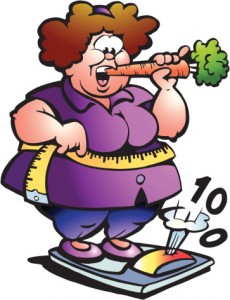 “How does she eat so much and not gain any weight?”
“How does she eat so much and not gain any weight?”
It’s a question that has left many puzzled and quite frustrated. The conversation about weight, however, is a longstanding one. Today, especially, weight gain and weight loss remain relevant discussions, as the United States faces an obesity epidemic.
Though several health initiatives to help fight obesity have been implemented over the past few years, it is important to first understand what factors contribute to obesity. According to a National Institutes of Health funded study conducted by UCLA, not only does behavior and environment affect obesity, but genetic factors can also play a significant role in causing obesity.
How our genes actually influence obesity varies. As explained by the Centers for Disease Control and Prevention (CDC), genes give the body instruction for responding to changes in its environment. Some research has linked genes to metabolism, pointing out that genetics affects how one’s body responds to high-fat diets. Genes can either cause an increased tendency to store fat or a diminished capacity to use dietary fats as fuel. Other research has suggested that genes influence behaviors, such as overeating and being sedentary.
The conversation about obesity can now change since research has shown that body weight is hereditary and that genetic disposition affects weight. In all efforts to fight obesity, living environments where high calorie foods are prevalent and physical activity is limited should be looked at more closely.
For more health and fitness tips visit:Facebook.com/FlushingHospital
All content of this newsletter is intended for general information purposes only and is not intended or implied to be a substitute for professional medical advice, diagnosis or treatment. Please consult a medical professional before adopting any of the suggestions on this page. You must never disregard professional medical advice or delay seeking medical treatment based upon any content of this newsletter. PROMPTLY CONSULT YOUR PHYSICIAN OR CALL 911 IF YOU BELIEVE YOU HAVE A MEDICAL EMERGENCY.










